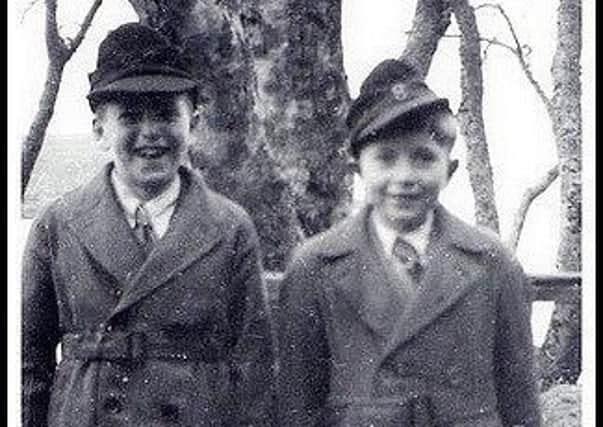Heritage project to capture Patterton’s WWII history
This article contains affiliate links. We may earn a small commission on items purchased through this article, but that does not affect our editorial judgement.


The earliest official record found of the camp being used to accommodate prisoners dates from May 1944.
Patterton Camp, or Camp 660 (named after the German working company based here) was created specifically for the accommodation of prisoners.
Advertisement
Hide AdAdvertisement
Hide AdIt consisted of four separate sections and was quite spacious. Photographs show a possible parade square, ornamental planting and paving, and dressed stone retaining walls, allotments and a football pitch.
It’s thought that it was initially a military accommodation camp, reordered to house the German Working Company later in the war.
Before the German prisoners arrived, the camp was occupied by Italians.
Two Italian Working Companies were based at Patterton from May 1944 and possibly earlier, until May 1945, when they were removed to make the camp available for housing German prisoners.
Advertisement
Hide AdAdvertisement
Hide AdIt is unclear what work the Germans carried out during their stay, but it’s thought that they may have worked in some local industry such as the printworks in Thornliebank.
By May 1947 only 189 prisoners remained.
The last prisoners left Patterton on June 29, 1947.
The Polish were in residence until sometime in 1949, following which there is evidence that the camp was used to house post-war homeless families from Glasgow.
Today there is little or no evidence that a Prisoner of War camp ever existed in the area.
But now that is set to change as a new heritage project, ‘Patterton WWII: A POW Camp and its Neighbours’, aims to shed light on the camp thanks to a National Lottery grant of £52,800.
Advertisement
Hide AdAdvertisement
Hide AdThe oral history project will capture the history of the camp and its impact on the local people between 1939 and the late-1950s.
Around 50 local volunteers, including many young people, have already received filming, research and/or oral history training and interviewed respondents who lived in or near Patterton during WWII and the post-war era of rationing and austerity.
Rachel Kelly, project co-ordinator, said: “The project is already underway, and we’ve conducted interviews with people from all over with first and second hand memories.
“We’re still looking for people to get in touch to share their memories of the time it was a Prisoner of War Camp, but also when it was used during the housing crisis after the war.
Advertisement
Hide AdAdvertisement
Hide Ad“We are also interested in any photographs or relics that any one has from the camp.
“Those who wish to volunteer are welcome to get in touch also. They will be given oral history amd historical research training.
“They will work with Dr Sue Morrison, a professional oral historian, to produce audio clips from the oral history archive, and work with a film maker to film interviews and create videos.”
In addition, the project will produce a unique oral history booklet packed with personal memories, photographs and a timeline of Patterton Camp 660.
Advertisement
Hide AdAdvertisement
Hide AdLittle is know about the Patterton PoW Camp with only a couple of books known to be written about its history.
“Rachel continued: “Due to the timescale there isn’t a lot of people who might remember the camp, so it’s vital that the time is now to record their memories.
“So little is known about the camp at Patterton – it’s very underresearched.
“Not everyone knows that these PoW and military camps up and down the country were used as temporary housing after the war.
Advertisement
Hide AdAdvertisement
Hide Ad“Then the councils decided to charge rent for people to stay there! It really is a fascintaing subject.”
Lucy Casot, head of HLF Scotland, said: “Thanks to National Lottery players, HLF is able to help communities learn about and take pride in their local heritage as well as training in new skills.
“Learning about history can be rewarding, fascinating and fun, and ‘Patterton WWII: A POW Camp and its Neighbours’ is no exception.”
If you would like to get in touch to share your memories or to volunteer, email Rachel at [email protected], call 07453442443 or visit them on Facebook at Lost Strathclyde Heritage Group